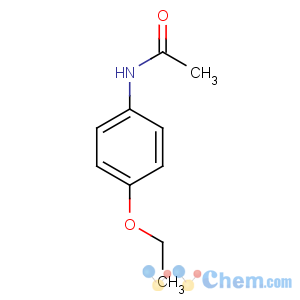Phenacetin
-
- Product NamePhenacetin
- CAS No.62-44-2
- Purity99%
- Min Quantity1Kilograms
- Price1~10

 View Contact Detail
View Contact Detail
-
 Molecular Structure
Molecular Structure
Detailed Description
The painkiller phenacetin was the world's first synthetic pharmaceutical drug. It was developed by an American chemist and began distribution in 1887. Phenacetin was often accompanied by aspirin and caffeine in what were called APC pills, which were widely distributed during and after World War II. The use of phenacetin in the U.S. was discontinued in the 1980s because of links to cancer and other adverse side effects, but it remains available in some countries.Phenacetin is a white crystalline powder with the chemical composition C10H13NO2. It was first developed by Harmon Northrop Morse in 1878. In addition to its pain-reducing properties, it also has been used as a fever-reducer, a treatment for rheumatoid arthritis and a treatment for intercostal neuralgia, a rare disorder that causes pain in the nerves around the ribs. It was one of the first painkillers that was not derived from opium while at the same time being absent of anti-inflammatory qualities.
In 1983, the U.S. Food and Drug Administration (FDA) banned phenacetin in the U.S. because of its discovered carcinogenic properties and its link to kidney failure. The FDA stated that phenacetin alone is reasonably believed to be a human carcinogen, or cancer-causing agent, and that painkiller mixtures containing the drug are known human carcinogens. There has been little evidence found that phenacetin alone is a human carcinogen because it usually has been administered in combination with other drugs.
Web: www.rawsgear.com
Web: www.rawsgearpharma.com
Email: gear@quality-steroid.com
Skype: +8615711952876
Whatsapp +8615711952876